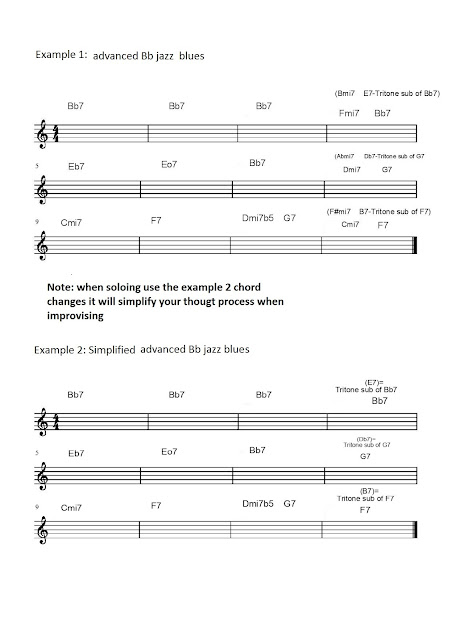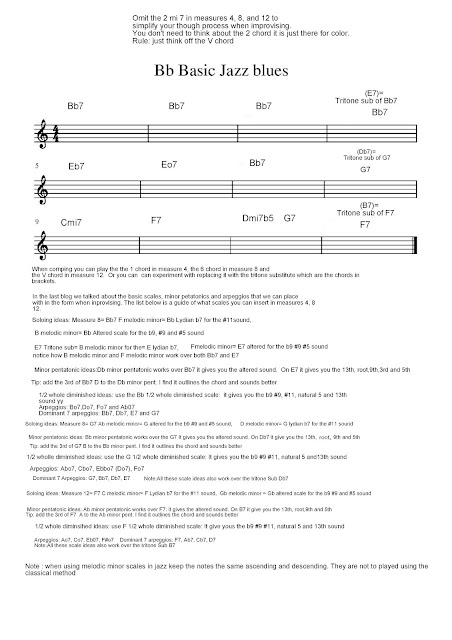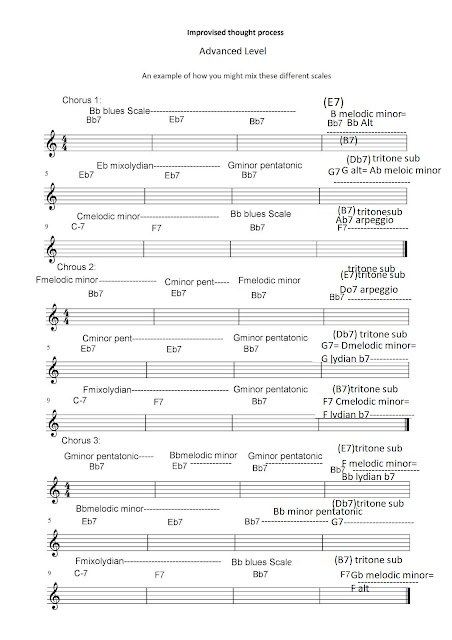To view our guitar blog lessons articles click on our Blogger link. Once you are on to blogger, click on the right hand column to view our blog archives of past lesson articles:
Blog Archive:https://guitartipsandtrix.blogspot.com/
Welcome To The Guitar Trix & Tips Blog
Guitar 6 School of Music welcomes you to the Guitar Trix & Tips Blog. This blog was originally intended for my students that I teach privately. It was suppose to be a place where they can come to read lesson material that I taught over the years. The lessons would be posted as blog and to be used as reference for them just in case they forgot or lost the material that I gave them in their private lesson. Since I’m posting these lesson blogs on the internet I invite anyone that is interested in learning about beginner, intermediate & advanced lesson information that will help them in their studies of the guitar. After all, the internet is public domain and I don’t mind sharing the information that helped me and my students learn and master the instrument. This blog will be for newbie’s and for advanced players alike. I’m sure there will be students out there that will find what I have to offer helpful and others might not find so helpful. The world is a tough critic and a hard one to please. I hope the majority of people will find these lesson blogs, useful as a study aid in which will help them achieve mastery over the guitar. Other topics that I will blog about: method books, guitars, gear, amps and much more. I will give my opinion of only the best books or gear that has helped me become a better player. I hope you enjoy and thanks for stopping by.
Guitar 6 School of Music (guitar6music.com) is now associated with Amazon.ca. We have added this online merchant to provide you with a safe and secure way to do your shopping on line.
Guitar6music.com is a participant in the Amazon Services
LLC Associates Program, an affiliate advertising program designed to
provide a way for websites to earn advertising revenues by advertising
and linking to Amazon.ca.
Struggling with your jazz picking technique over fast tempos (Then read this article it may help you)
 |
| Photo by Carlo Cavero on Flickr |
If you are having trouble learning Charlie Parker licks on guitar or from your favorite jazz guitar heroes. Then it is time to have a second look at your picking technique. Your guitar picking technique may be in for an overhaul. The alternate picking that you are currently using at the moment may not work at fast tempos as it does for slow and moderate tempos. You will notice things start to fall apart when you bump up the metronome over 200 bpm.
From my personal experience I tried alternate picking and economy picking and had no success with both. My alternate picking would just break down when I tried to learn Pat Martino lines at the at the proper tempo. The tempo would usually be over 200 and I had no trouble playing the guitar phrase at a slow and a medium tempo, but at the regular tempo it just wasn't cutting it. I did this for almost 30 years trying to make alternate picking work for me. What a colossal waste of time and it was like trying to open up a locked door with the same key. All I got was the same results all over again . The idea of getting a locksmith to cut and make the correct key that would open up the door would of made more sense. Instead, I kept using the wrong key for 30 years. That is what alternate picking felt like. So the moral of this story is to find the right guitar picking technique that will work for you. Find the right key that will open up a new door to speed and bring your picking skill up a notch. Finally, the door opened up for me and picking fast lines were made easy where I could execute them with ease at a quick tempo. If I can do it, so can you and don't be discouraged. Use the internet and keeping researching different stringed instruments and their related picking techniques. It doesn't have to be guitar, it can be derived from a lute, mandolin, or different styles of music like classical or bluegrass.
In part two of Struggling with your jazz picking technique over fast tempos I will demonstrate the picking technique in a guitar lesson. I will show you exactly what I'm doing in terms of picking motion and movement. I will give you a back story on where I got this picking technique from and which of one of my guitar heroes influenced me to play this way. All I can say that the picking technique was inspired by a New York based jazz guitar master who as since passed on. I took some lessons from one of his students who showed me the technique. So stay tuned for the second part of this blog guitar lesson article.
One more important note: I'm not telling anyone to give up on alternate picking because that picking technique is great for playing other styles of music like rock, blues etc... I'm just sharing my experience that alternate picking doesn't work for jazz guitar, at least for me it didn't work out.
Click Here: to see a video of me using the picking technique with a Wes Montgomery solo:
In this video I'm using a #wesmontgomery guitar solo as a study to work on my chops for fast tempos. Playing fast tempos and licks is something that I struggled with for a long time. I think I figured out a picking technique that works for me at these quick tempos. If you are struggling with your jazz guitar picking please don't hesitate to contact me if you want a lesson on this particular #guitarpickingtechnique that I'm using.
If you are interested in hearing more or purchasing some of Wes Montgomery music check some of his albums on the links below:
Amazon Links:
Smokin' At The Half Note [VINYL]
Wes’S Best: The Best Of Wes Montgomery On Resonance
Like us on: FB or Follow on Twitter & Instagram
The Guitar Trix & Tips Blog is associated with Guitar 6 School of Music
and is a amazon associate.
Guitar6music.com is a participant in the Amazon Services LLC Associates Program, an affiliate advertising program designed to provide a way for websites to earn advertising revenues by advertising and linking to Amazon.ca.
Like us on: FB or Follow on Twitter & Instagram |
In the last lesson blog we talked about using some of the most common scales, arpeggios and minor pentatonic scales that can be used over a basic B flat jazz blues.https://guitartipsandtrix.blogspot.com/2019/06/how-to-solo-over-basic-jazz-blues-part-1.html In this lesson we will talk about how we can spice up the blues by implying chord substitution and what scales we can use over these substitutions. Most of the substitute chord changes will either take place at the last measure or the last 2 measures of each line. Keep in mind that these soloing ideas will work over the basic changes or the advanced chord changes of the blues (Charlie Parker style blues or Bird Blues). Even if the rhythm guitar, piano or bass player does not play these subs they should still sound good. It will create some tension and release, it should give your lines a more sophisticated jazz sound. Have and fun and happy practicing.
Step 1: Simplify your thinking by simplifying the chord changes. The picture below will demonstrate on how you should think. Less thinking means you get to concentrate on the creative side of the brain. For more on drawing from the creative side of the brain read my article: The Right Brain Effect Will Help You Improvise With Ease
https://brainmadesimple.com/left-and-right-hemispheres.html
Step 3: Start learning some of the scales ideas and inserting them in measures 4, 8 or 12. Start of off by implying the simple harmony and by the 2nd or 3rd chorus you can start employing some of the substitution ideas into your lines. Use them sparingly going back and forth from simple to advanced lines. You will have a variety of ideas to choose from and it will give your playing style a more sophisticated sound.
Review the last lesson before you move on to the ideas below:
https://guitartipsandtrix.blogspot.com/2019/06/how-to-solo-over-basic-jazz-blues-part-1.html
When comping you can play the 1 chord in measure 4, the 6 chord in measure 8 and the V chord in measure 12. Or you can experiment with replacing it with the tritone substitute which are the chords in brackets.
In the last blog we talked about the basic scales, minor petatonics and arpeggios that we can place within the jazz blues form when improvising. The list below is a guide of what scales you can insert in measures 4, 8
Soloing ideas: Measure 8= Bb7 F melodic minor= Bb Lydian b7 for the #11sound, B melodic minor= Bb Altered scale for the b9, #9 and #5 sound
E7 Tritone sub= B melodic minor for the= E lydian b7, F melodic minor= E7 altered for the b9 #9 #5 sound. Notice how B melodic minor and F melodic minor work over both Bb7 and E7
Minor pentatonic ideas:Db minor pentatonic works over Bb7 it gives you the altered sound. On E7 it gives you the 13th, root,9th,3rd and 5th
Tip: add the 3rd of Bb7 D to the Db minor pent. I find it outlines the chord and sounds better
1/2 whole diminished ideas: use the Bb 1/2 whole diminished scale: it gives you the b9 #9, #11, natural 5 and 13th
sound
Arpeggios: Bo7,Do7, Fo7 and Ab07
Dominant 7 arpeggios: Bb7, Db7, E7 and G7
Soloing ideas: Measure 8= G7 Ab melodic minor= G altered for the b9 #9 and #5 sound, D melodic minor= G lydian b7 for the #11 sound
Minor pentatonic ideas: Bb minor pentatonic works over the G7 It gives you the altered sound. On Db7 it give you the 13th, root, 9th and 5th Tip: add the 3rd of G7 B to the Bb minor pent. I find it outlines the chord and sounds better
1/2 wholle diminished ideas: use the G 1/2 whole diminished scale: It gives you the b9 #9 #11, natural 5 and13th sound
Arpeggios: Abo7, Cbo7, Ebbo7 (Do7), Fo7
Dominant 7 Arpeggios: G7, Bb7, Db7, E7
Note:All these scale ideas also work over the tritone Sub Db7
Soloing ideas: Measure 12= F7 C melodic minor= F Lydian b7 for the #11 sound, Gb melodic minor = Gb altered scale for the b9 #9 and #5 sound
Minor pentatonic ideas: Ab minor pentatonic works over F7: it gives the altered sound. On B7 it give you the 13th, root,9th and 5th
Tip: add the 3rd of F7 A to the Ab minor pent. I find it outlines the chord and sounds better
1/2 whole diminsihed ideas: use F 1/2 whole diminished scale: It give yous the b9 #9 #11, natural 5 and 13th sound
Arpeggios: Ao7, Co7, Eb07, F#o7 Dominant 7 arpeggios: F7, Ab7, Cb7, D7
Note:All these scale ideas also work over the tritone Sub B7
The Diagram and video below illustrates my thought process when soloing over a Bb Jazz blues.
View this post on InstagramA post shared by guitartipsandtrix (@guitartipsandtrix) on
https://www.instagram.com/p/By6teWtnPpF/?utm_source=ig_web_copy_link
If you need the tabs to any of these scales please email me and I will send you the tabs to the some of the scale patterns that I use. Visit my website link below to send me a message:
Guitar6music.com is a participant in the Amazon Services LLC Associates Program, an affiliate advertising program designed to provide a way for websites to earn advertising revenues by advertising and linking to Amazon.ca.
Click here to view older posts: https://guitartipsandtrix.blogspot.com/
All Images & Text are copyright & owned by www.guitar6music.com






